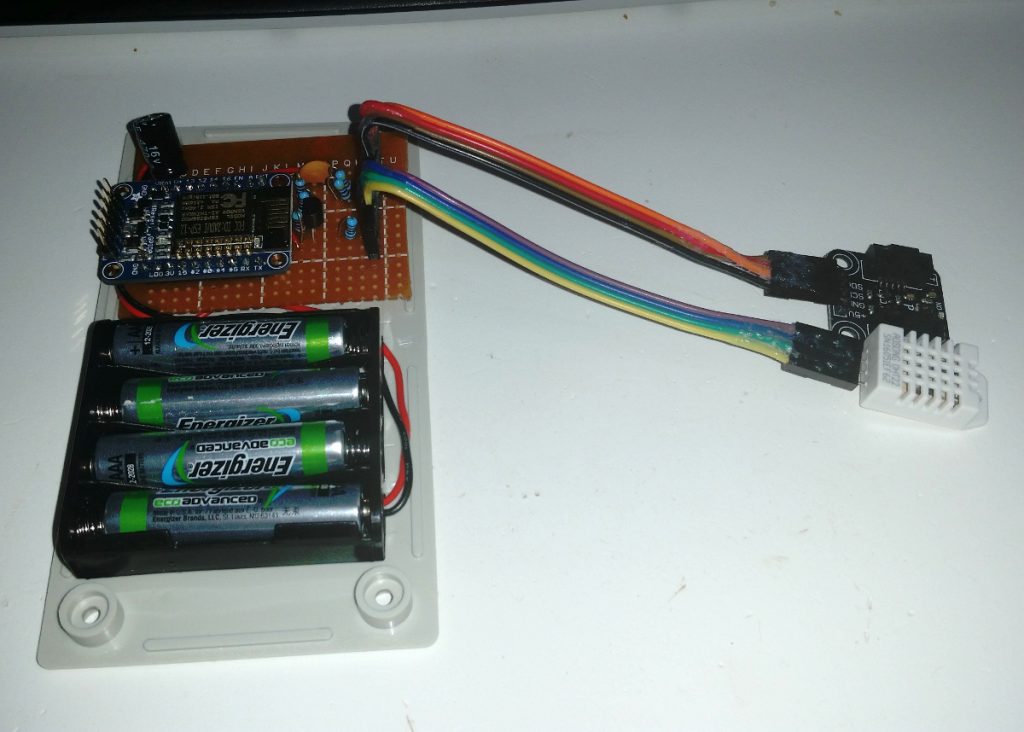By carefully rearranging the operations my weather station does each time it wakes up, I have reduced the power consumption even further.
As it wakes up, it needs to make a series of measurements:
- Read the current battery voltage
- Read the current temperature from a DHT22
- Read the current humidity from a DHT22
- Read the current temperature from a BMP180
- Read the current air pressure from a BMP180
The battery voltage is read through a resistor voltage divider feeding into the analog input of the ESP8266. This reading is very sensitive, and a massive power drain from the WiFi function will bring down the measured voltage. This can be mitigated by using capacitors to buffer the analog readings, but if I have a choice I’d still prefer to have the WiFi function off when reading this.
The rest of the readings, however, are digital and not that sensitive to overall system power drain, and that gives us an opportunity to do things in parallel.
Continue reading “Further reducing power consumption on ESP8266”


